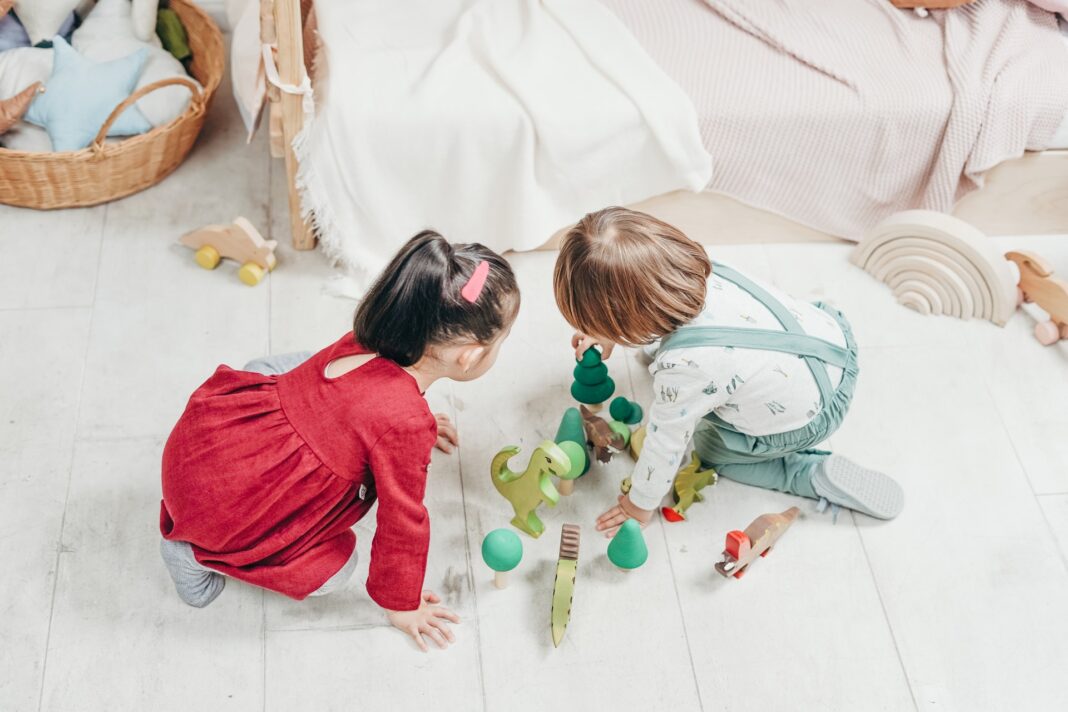Children are naturally playful. After the initial couple of months, when the complete focus is on eating and sleeping, infants start to engage in play with their parents and surroundings. Left alone, young children will launch into imaginary play, inventing characters and stories. With peers around, children will almost instinctually organize games and activities. But unfortunately, these days, you may have noticed that many kids are uncomfortable when put into free play situations. They recoil to their gadgets and smartphones. They often complain of boredom and fight. So, it is the parents who need to evaluate if your child getting enough play time, consciously incorporate free play in daily routine and create a playful household environment.
What is free play?
Free play includes different forms of imaginative play such as role-play, pretend play, creative play (including artistic and musical games, or creating new things using what is available), exploring places, objects, nature, etc.
So why is free play important? Free play is important because it is unstructured and allows opportunities to explore a child’s imagination, explore varied and creative ideas. Children themselves set the tone and pace of play. Free play includes different forms of imaginative play such as role-play, pretend play, creative play (including artistic and musical games, or creating new things using what is available), exploring places, objects, nature, etc. Free play depends on your child’s interest.
It is natural for children to engage in free play. But it can sometimes become difficult for parents to make free play experience fun and engaging for children.
Role of parents in free play
1. Planning play
In encouraging free play, your role is to provide the children with the support, space, time, and resources to engage in playtime. Based on the child’s developmental age, arrange for play opportunities that are safe, age-appropriate, inclusive, and fun. Buy the right toys for your child taking into consideration 10 important things when buying toys for your child.
2. Supporting play
You can support free play by spotting the child’s strength, encouraging, setting boundaries, taking opportunities to raise awareness of life lessons that children can learn during play, allowing space to explore within the boundaries, ensuring safety of children during play, adapting play to suit individual needs, allowing play to be led by the child, intervening to enforce boundaries when needed, and participating in play when appropriate.
3. Reviewing play
Observing, talking, and listening to children when they engage in free play can help you identify change opportunities for future playtime to ensure each playtime is beneficial and engaging. These can include:
– Changing the environment, toys, or delivery to suit their needs.
– Pairing a calm and supportive child with the child that is struggling to engage
– Making an activity simpler by reducing the number of rules, breaking down the steps into smaller pieces of information, or showing the child how to participate in the activity.
– Focusing on the child’s strengths and adapting playtime accordingly
– Focusing on the type of play that the child enjoys to build confidence and self-esteem before trying something new.
4. Strike the balance
Striking a balance is the key is knowing when to intervene, step back, observe or participate in helping children gain the most out of free play. So it would help if you had a detailed understanding of play and its potential to capitalize on the opportunities that play can provide.
There are three key indicators that you should look for as a parent to be assured that children are learning through free play. These are choice, curiosity, and delight. Choice happens when the children make decisions, negotiate, manage conflicts, etc. Curiosity refers to exploring, creating, pretending, imagining, and trying different options during play. Delight reflects in their happiness, joy, laugh, and comfort.
How you can make free play fun and engaging
1. Share your enthusiasm.
Through your voice, tone, and body language, share your enthusiasm. Show children that you are really excited about the game and that you are excited to spend time with them in a fun way.
2. Make a game out of it.
There are some activities that can be turned into a game. Children can get excited about the idea of playing a game and thus get hooked on it.
3. Let kids play an active role.
The whole idea of free play is to allow kids to explore the world in their own way. So, let them be active participants in the planning process and let them define the rules of the game.
Don’t be judgmental, be accepting, do not control, lead by example, be silly with them in fun ways, provide toys or play items that suit your child’s interest. For example, if you play cricket, let your children decide who gets to bat, which is the mark for 4, and which is the wicket.
Another example is, say you are reading a storybook with your child. You can incorporate role-play in the reading process. If it is a story with lots of conversations, imagine you and your child are playing two characters of the story and enact the scene together. Alternatively, you can play the ‘Guess what I am acting’ game. You take turns. One of you enact some scene from the story, and the other one guesses which scene it is.
4. Routines work wonders for kids.
Create routines. Assign a fixed time each day for free play. It can happen anytime and anywhere, solo or with other children, with you participating or supervising. Even a quiet corner at home can provide an opportunity for free play. Say every day 2-3 pm after lunch, your children play at home before their afternoon nap, and between 5-6 pm they go out to play with their friends in the park. If they know this, they will look forward to this time every day. Children will automatically leave the gadget or tv and get involved in play.
Tell us in the comments below what are the other ways you use to make free play engaging.




